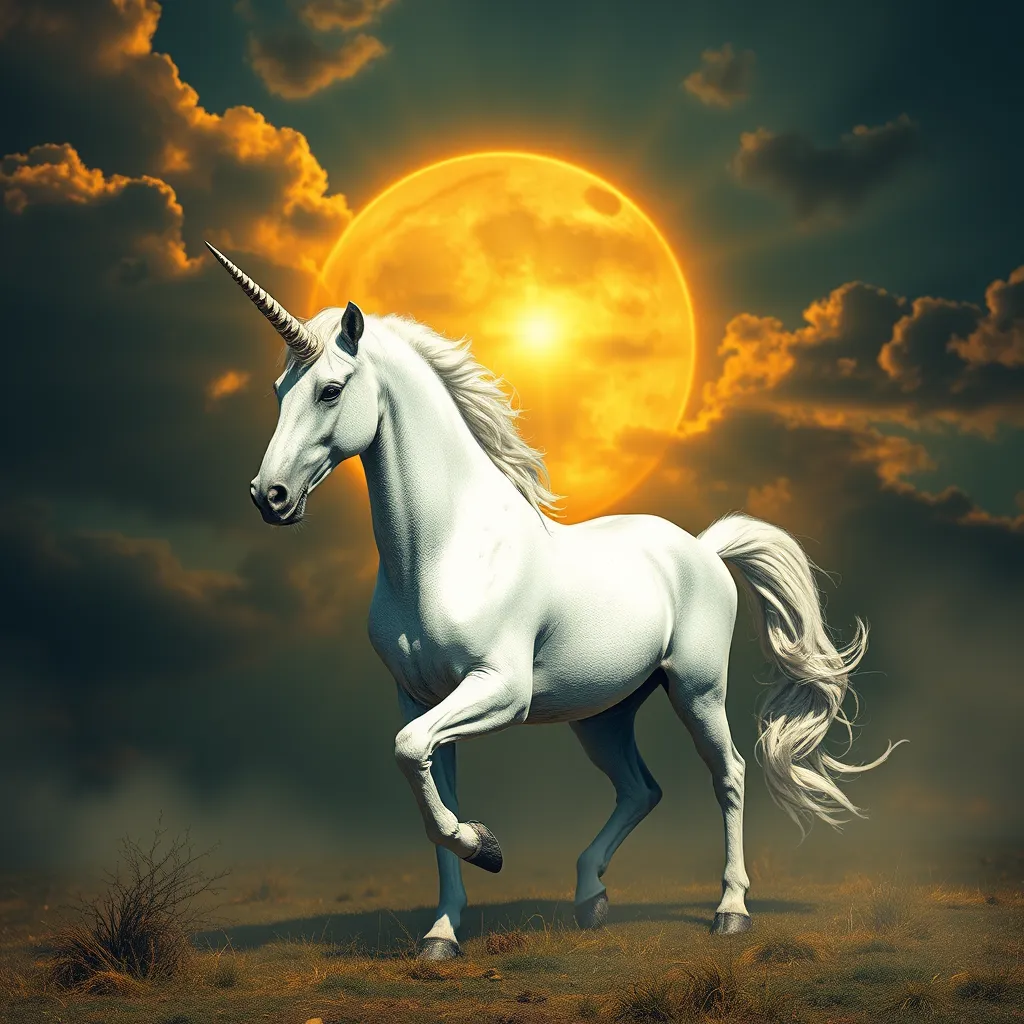The Unicorn’s Journey: Exploring the Unicorn in African Myth and Legend
I. Introduction to the Unicorn in Global Context
The unicorn is a mythical creature that has captured the imagination across various cultures around the world. Often depicted as a horse-like being with a single spiral horn protruding from its forehead, the unicorn symbolizes purity, beauty, and grace. From ancient texts in the Middle East to European folklore, the unicorn appears in countless legends and tales, each imbued with unique meanings and cultural significance.
While the unicorn is widely recognized in Western mythology, exploring its representation in African mythology reveals rich narratives and symbolism that are often overlooked. Africa’s diverse cultures offer a plethora of interpretations of the unicorn, reflecting the continent’s intricate relationship with nature, spirituality, and identity.
This article aims to delve into the historical origins, symbolism, regional variations, and contemporary relevance of the unicorn in African mythology, highlighting its enduring legacy as a multifaceted symbol.
II. Historical Origins of the Unicorn Myth in Africa
The origins of the unicorn myth in Africa can be traced through ancient texts and artifacts that suggest early encounters with the concept of this mythical creature.
A. Examination of ancient texts and artifacts
Numerous ancient texts, such as those from the Greek historian Ctesias, mention creatures resembling unicorns in far-off lands, including Africa. Artifacts, including carvings and pottery, have been uncovered in regions such as Egypt that depict horned animals, suggesting a connection to the unicorn myth.
B. Influence of trade routes on the spread of the unicorn legend
The extensive trade routes across Africa facilitated cultural exchanges that contributed to the spread of the unicorn legend. Merchants and travelers shared stories and beliefs, allowing the concept of the unicorn to evolve and adapt to local cultures.
C. Early references in African oral traditions
Oral traditions are crucial in understanding the historical context of the unicorn in Africa. Many African cultures have stories that feature horned creatures, often imbued with spiritual significance and moral lessons. These stories vary between regions, showcasing the diversity of interpretations of the unicorn myth.
III. Symbolism of the Unicorn in African Cultures
In African cultures, the unicorn often embodies various symbolic meanings that reflect the values and beliefs of different communities.
A. The unicorn as a symbol of purity and nobility
The unicorn is frequently associated with purity and nobility, representing a connection to higher spiritual realms. In many cultures, it is believed that only the pure of heart can approach the unicorn, highlighting its role as a guardian of sacred spaces.
B. The connection between the unicorn and fertility or prosperity
In some African traditions, the unicorn is linked to fertility and prosperity. It is often depicted as a creature that blesses the land with abundance and encourages growth, making it a vital symbol in agricultural communities.
C. The unicorn as a representation of the spirit world
The unicorn also serves as a bridge between the physical and spiritual worlds. In various myths, it is seen as a messenger or guide for souls, leading them through the afterlife. This connection reinforces the idea of the unicorn as a sacred and revered being.
IV. Regional Variations of the Unicorn Legend
The unicorn legend varies significantly across different regions of Africa, each with its unique interpretations and stories.
A. The unicorn in North African folklore
In North Africa, the unicorn is often depicted in Berber folklore as a powerful and mystical creature associated with the desert. It is believed to possess healing powers and is often featured in tales of bravery and adventure.
B. The significance of the unicorn in West African tales
West African cultures frequently weave the unicorn into stories that highlight moral lessons. These tales often involve the unicorn helping communities overcome adversity or teaching important values such as respect and cooperation.
C. Unicorn-like creatures in East and Southern African myths
In East and Southern Africa, various myths describe unicorn-like creatures that embody similar traits to the traditional unicorn. These beings are often associated with rainmaking, fertility, and the protection of livestock, further emphasizing their importance in agricultural societies.
V. Unicorns in Contemporary African Literature and Art
The unicorn myth continues to inspire contemporary African literature and art, showcasing its relevance in modern storytelling.
A. Analysis of modern authors who incorporate the unicorn myth
Many African authors incorporate the unicorn myth into their works, using it as a metaphor for resilience and hope. These stories often reflect the struggles and triumphs of African communities, bridging the gap between traditional folklore and contemporary issues.
B. Representation of unicorns in African visual arts
In visual arts, unicorns are represented in various forms, from paintings to sculptures. Artists often use the unicorn to explore themes of identity, spirituality, and cultural heritage, creating a dialogue between the past and the present.
C. The unicorn’s role in contemporary storytelling and media
The unicorn has found its place in modern media, including films and television shows that draw inspiration from African mythology. These adaptations help to introduce the unicorn and its symbolism to a global audience, fostering a deeper appreciation for African folklore.
VI. Comparative Analysis: African Unicorns vs. European Unicorns
Comparing the unicorn myths of Africa and Europe reveals both similarities and differences in characteristics and symbolism.
A. Similarities and differences in characteristics and symbolism
Both African and European unicorns share traits of purity and grace. However, African unicorns often have deeper connections to the spirit world and community values, while European unicorns are more commonly associated with chivalric ideals and romanticism.
B. Cultural exchanges and influences over time
Throughout history, cultural exchanges between Africa and Europe have influenced the evolution of the unicorn myth. As trade routes opened, stories and symbols blended, leading to a hybridization of the unicorn’s representation.
C. The evolution of the unicorn myth in both contexts
While the unicorn remains a symbol of purity in both cultures, its role in African mythology tends to emphasize community and resilience, contrasting with the often individualistic portrayal found in European tales.
VII. The Unicorn as a Metaphor for African Identity
The unicorn serves as a powerful metaphor for African identity, embodying themes of resilience, hope, and cultural heritage.
A. Exploration of how the unicorn represents resilience and hope
In the face of challenges, the unicorn symbolizes the unwavering spirit of African communities. Its mythical qualities inspire hope, encouraging individuals to persevere and thrive despite adversity.
B. Role of the unicorn in discussions of cultural heritage
The unicorn plays a significant role in discussions surrounding cultural heritage, reminding contemporary Africans of their rich traditions and the importance of preserving their stories for future generations.
C. Significance of the unicorn in post-colonial narratives
In post-colonial contexts, the unicorn becomes a symbol of reclaiming identity and heritage. It represents the blending of traditional beliefs with modern realities, fostering a sense of pride in African culture.
VIII. Conclusion: The Enduring Legacy of the Unicorn in African Mythology
The exploration of the unicorn in African mythology reveals a rich tapestry of stories and symbolism that reflect the continent’s diverse cultures. From its historical origins to its contemporary representations, the unicorn remains a potent symbol of purity, resilience, and connection to the spirit world.
As we reflect on the key points discussed, it becomes clear that preserving these myths is vital for understanding and appreciating Africa’s cultural heritage. By continuing to explore and share these legends, we can foster a greater appreciation for African folklore and its significance in our global narrative.
In conclusion, the unicorn’s journey through African mythology invites us to engage with and celebrate the richness of these stories, encouraging further exploration and appreciation of a vibrant cultural legacy.



